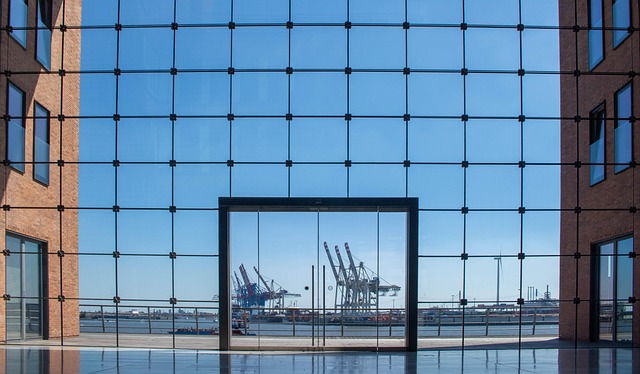Warehouses are vital for e-commerce growth, acting as central hubs for storage, sorting, and distribution. E-commerce giants optimize warehouse real estate through strategic planning, advanced technologies like automation and robotics, vertical storage solutions, and smart aisle width determination to enhance efficiency and minimize costs. Future warehouses will integrate AI, IoT, advanced robotics, and autonomous vehicles for improved inventory management, order fulfillment, and supply chain optimization, shaping a more efficient e-commerce landscape where real estate is crucial for accommodating growth.
As e-commerce continues its relentless expansion, warehouses play a pivotal role in ensuring smooth logistics and timely deliveries. This article delves into the essential functions of warehouses in the dynamic landscape of online retail, exploring strategies to optimize limited real estate. We also shine a light on future trends, focusing on smart warehouses leveraging technology for enhanced efficiency. Understanding these developments is crucial for businesses aiming to stay competitive in today’s digital market.
The Role of Warehouses in E-commerce Logistics

Warehouses play a pivotal role in the intricate logistics network that supports e-commerce’s booming expansion. They serve as strategic hubs, facilitating the efficient storage, sorting, and distribution of goods to meet the ever-increasing online shopping demands. With e-commerce’s rapid growth, warehouses have evolved from simple storage spaces into sophisticated operations centers, optimizing every step of the supply chain.
Real estate has become a crucial consideration in warehouse management. E-commerce giants require vast, strategic locations with ample space for expansive facilities. These warehouses are designed to accommodate high-volume inventory, advanced sorting technologies, and efficient loading areas, ensuring timely order fulfillment. The real estate aspect involves careful planning to maximize storage capacity while minimizing operational costs, thereby contributing to the overall success of e-commerce businesses in today’s fast-paced market.
Strategies for Optimizing Warehouse Real Estate

To optimize warehouse real estate in the face of booming e-commerce, businesses must adopt strategic approaches that maximize space efficiency and streamline operations. This involves meticulous planning during the design or renovation phases, ensuring every square meter contributes to productivity. Implementing vertical storage solutions, such as high-density racking systems, allows for optimal utilization of headroom, while smart aisle width determination and efficient material handling equipment placement can significantly reduce congestion and improve inventory movement.
Additionally, leveraging advanced technologies like automation and robotics can transform warehouse management. Automated storage and retrieval systems (ASRS) optimize order picking routes and reduce human error, while robots can handle heavy lifting and long-distance transportation within the facility. These innovations not only enhance operational speed but also contribute to better real estate management by facilitating more compact layout designs.
Future Trends: Smart Warehouses and E-commerce Growth

The future of e-commerce is set to be shaped by advanced warehouse technologies, with smart warehouses becoming a driving force behind the industry’s booming expansion. As online retail continues its relentless growth, real estate plays a pivotal role in accommodating the ever-increasing demand for storage and distribution spaces. Developers and businesses are increasingly investing in state-of-the-art facilities that incorporate automation, artificial intelligence, and IoT (Internet of Things) technologies to streamline operations and enhance efficiency.
These smart warehouses promise significant improvements in inventory management, order fulfillment, and overall supply chain optimization. By leveraging data analytics, automated systems can make real-time decisions, optimize product placement, and ensure faster and more accurate order processing. The integration of advanced robotics and autonomous vehicles further revolutionizes warehouse operations, reducing human error and labor costs while increasing productivity and precision in handling goods.






